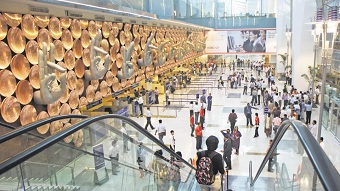Body scanners are expected to return to Delhi’s Indira Gandhi International Airport for another round of trials shortly, Central Industrial Security Force (CISF) officers said, adding that the “improved” scanners are likely to raise fewer false alarms than what they did during trials in 2017.
Officers of the CISF, the force responsible for the airport’s security, said scanners have been further fine tuned as per Indian standards, making them more sensitive to jewellery, saree and other Indian-wear with metallic embroidery. During the first trials held in December 2016, the body scanners raised false alarms whenever a woman passed through it. In most of the cases, it was found that it was either the mangalsutra (a traditional piece of jewellery that married Indian women wear) or metallic embroidery on her saree.
“We had then asked the manufacturer to tweak specifications as per the Indian standards but some problems persisted during the second round of trials conducted between 2017 and 2018. The machine has now been further fine tuned and will be tested at Terminal 3,” said a CISF officer who did not wish to be named. The officer also added that during the last trial runs, the scanners at times also failed to spot a pen or wallets.
Confirming the development, Additional Director General (Airport Sector) MA Ganpathi said, “We expect body scanners to be back on trial at the IGI airport within a week. Initially, the scanners will be used only by our staff and CISF personnel during the trials and then they will be opened for the flyers.” The scanners are telephone booth-like structures in which the flyers have to stand for 3-5 seconds during which it captures an X-ray image of the person which is checked by the operator to see if any unwanted or prohibited item is being carried by the person. Developed by a Russian company in a joint venture with a Gujarat-based manufacturer, the scanner will not sound an alert immediately, but will produce an X-ray image for the screener, who, in turn, will decide if the passenger is hiding any suspicious items





